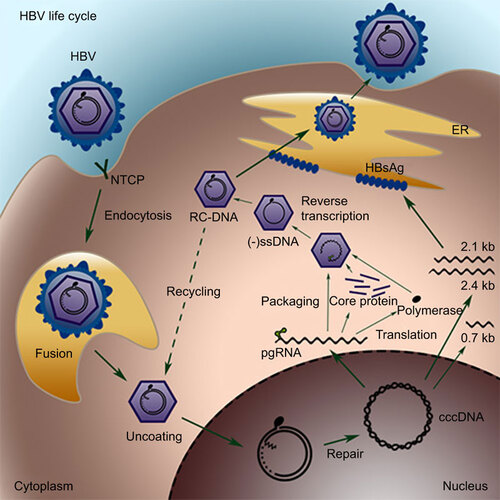Figures & data
Figure 1 The replication cycle of HBV. HBV virions bind to the receptor NTCP on hepatocytes and are internalized. Nucleocapsids are released into the cytoplasm and then translocated to the nucleus, where the genome is converted into cccDNA through a poorly understood mechanism, most likely via the DNA repair mechanism. The HBV cccDNA serves as the template for transcription of the pregenomic and subgenomic RNAs. The pregenomic RNA is the template for both reverse transcription and translation of polymerase and core proteins. The polymerase binds to the packaging signal of the pregenomic RNA, and both of them are incorporated into the viral capsid, inside which RC-DNA is generated through reverse transcription. The resulting RC-DNA can either be enveloped in ER and secreted as progeny virions or be recycled back to the nucleus for cccDNA amplification. ER, endoplasmic reticulum; NTCP, sodium taurocholate cotransporting polypeptide.

Table 1 Current antiviral treatments and potential strategies that may eliminate persistent cccDNA
